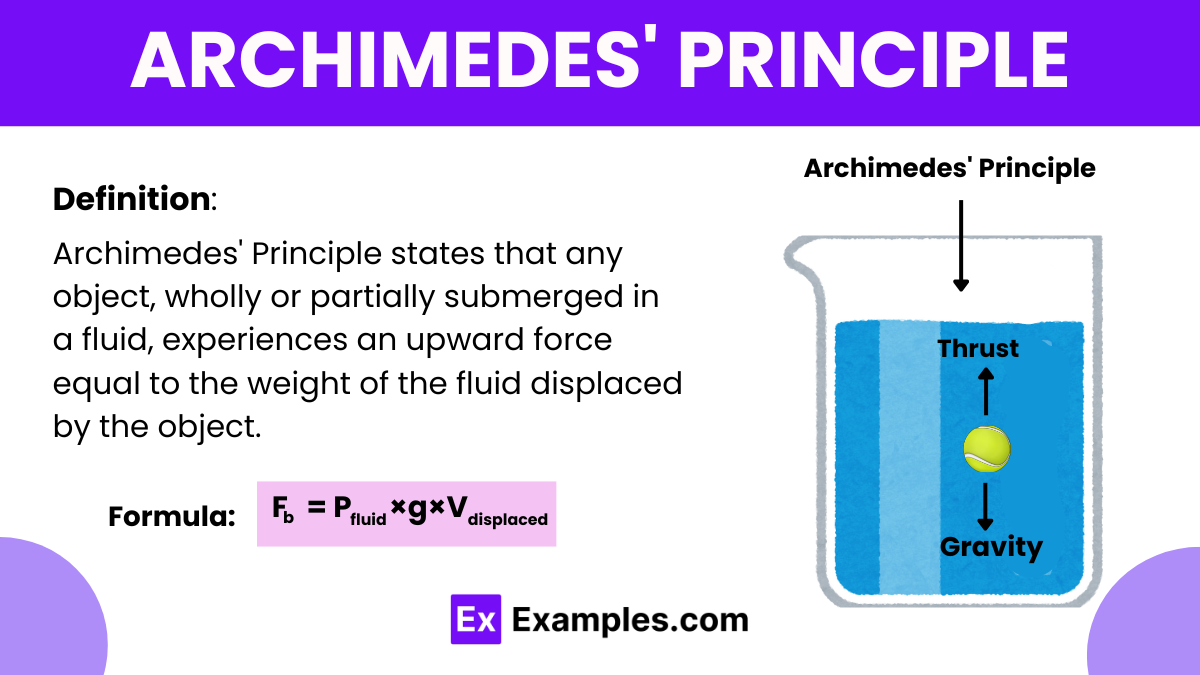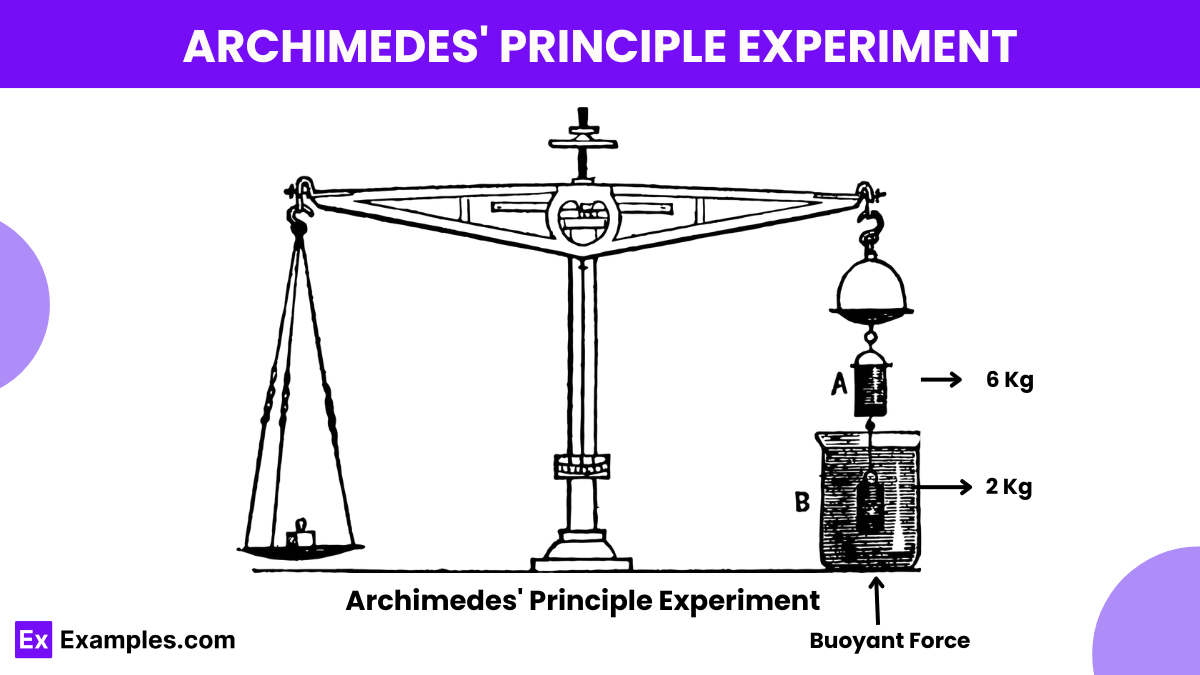What does Archimedes' Principle state?
The force acting on a submerged object is equal to the object's weight.
The buoyant force on an object is equal to the weight of the fluid displaced by the object.
The pressure in a fluid decreases with depth.
An object will sink if its density is greater than the fluid's density.




